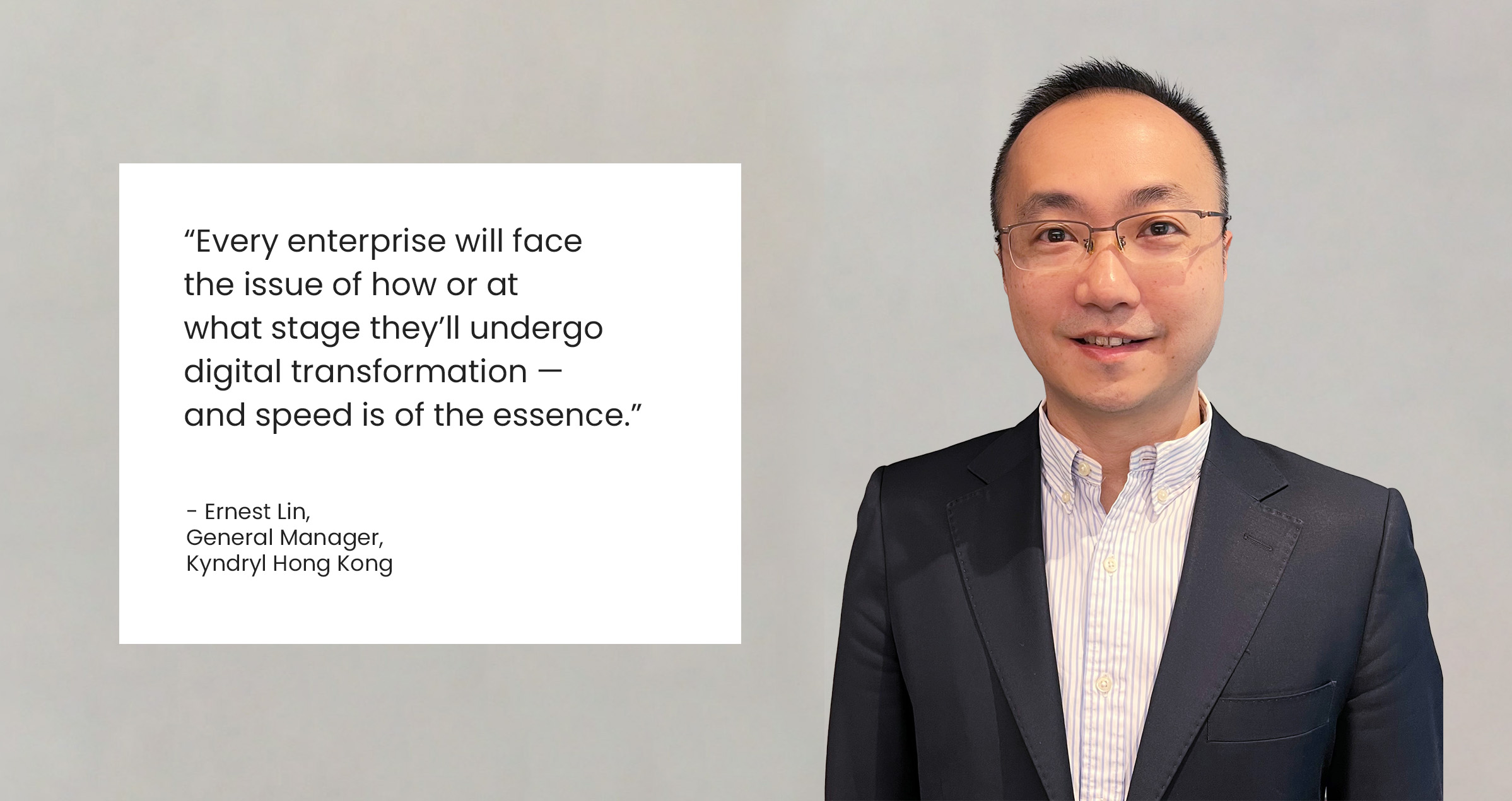Complex, Custom, Collaborative: Why Enterprise Cloud Transformation Takes More Than Plug-and-Play
Eighty-five percent of global businesses plan to maintain or increase their tech budgets this year, having taken a key lesson from the pandemic to heart: innovation is more crucial than ever1.
For the retail giant that migrated from an end-of-life data center to a cloud environment, unifying the customer experience across hundreds of stores in the process, or the wholesale bank that is committed to driving innovation through hybrid cloud transformation, the benefits of digital transformation and IT modernization are clear.
With more enterprises reimagining their business in the pandemic-accelerated digital age, many are turning to cloud to transform their business models, streamline their enterprise processes and enhance their customer experiences. From forecasting demand to improving cost visibility, the business value of cloud adoption has now surpassed $1 trillion for Fortune 500 companies alone2. Cloud transformation is a matter of “how,” not “if” or “why” – and a majority of CIOs and CTOs recognize its business necessity , with corporate cloud spending on course to surge this year3.
Ernest Lin, General Manager of Kyndryl Hong Kong, is familiar with the opportunities – and complexities – of cloud transformation. “As market competition demands that enterprises innovate and modernize, digital transformation and cloud transformation is not a choice; it's an imperative,” Lin says. “Every enterprise will face the issue of how or at what stage they’ll undergo the transformation – and speed is of the essence.”

New Ways of Working: A Requisite for Cloud Transformation
As more enterprises look to move to cloud, the skills gap is the first, and most daunting, hurdle they’ll face. Far more than an infrastructural lift-and-shift or technological plug-and-play, enterprise cloud strategy requires specialized skills that many organizations lack.
For enterprises building a cloud-optimized operating model that works across multiple business functions and enables new capabilities, far-reaching considerations like scalability, security and digital resilience that work through containerization, microservices and DevOps are also more complex than creating an initial cloud-ready environment.
In addition to technical know-how, enterprises need to be empowered to embrace new and agile ways of working to capture full cloud value, including harnessing cloud to accelerate innovation through digital transformation technologies such as AI/ML, data intelligence and automation at scale. Traditional teams must adopt an iterative approach by embracing practices like continuous integration and continuous delivery, which are vital in ensuring new changes can be applied granularly, with minimal impact on applications and workloads4.

Enterprises can utilize modern operations such as integrating automation and AI into IT operations and enhancing financial operations for increased cost visibility and optimization.
As Lin notes, “Each enterprise is at a different stage of the innovation journey and has unique objectives. Rather than adopting a one-size-fits-all approach, it’s important to find the right entry point or use cases for your enterprise, and then build an enterprise architectural blueprint and governance model.”
But it takes experience to understand what works best for an enterprise and to integrate those solutions into a customized, robust framework, instead of simply replicating what competitors are doing. “Every solution needs to be built with customers in mind,” says Lin. “It’s about going through a cloud consulting and design journey with the customer to define what kind of workflow would be right for them.”
Ecosystems That Enable Full-Stack Solutions
That journey often requires solutions across the technology stack.
For a Hong Kong-based organization in the transportation industry, for example, what started with the modernization of its infrastructure through cloud containerization evolved into the development of 10 use cases in just 18 months, including automobile license validation and motion detection. By expanding from infrastructure to applications across the technology stack, technology services providers like Kyndryl are able to deliver what clients value most in their business interactions and day-to-day operations.
Behind the scenes, a broad ecosystem makes this possible. Kyndryl’s key partnerships with leading hyperscalers enable it to unlock new possibilities for its customers. For content management company Viewpointe, the full-stack modernization of its IT infrastructure and operations enabled it to become cloud-native on the Microsoft Azure platform, catalyzing its growth strategy. And Krungsri, Thailand’s fifth largest financial group, is leveraging cloud to become a digital banking leader, having already taken the steps of transforming to a hybrid architecture and migrating a strategic set of workloads to Amazon Web Services (AWS).
As enterprises partner with Kyndryl to realize their transformation aspirations, Kyndryl’s capabilities across tech partners, combined with its own expertise and IP, ensure seamless system integration.

“As a focused, independent company, we're building on our foundation of excellence by creating systems in new ways, innovating and co-creating with a broad ecosystem of partners across all technology stacks. That creates a sophisticated possibility for us in creating solutions for enterprises. We can build and run technology-agnostic, full-spectrum solutions for our customers,” says Lin.
In the digital age, transformation waits for no business. And that’s what the heart of the world’s most vital systems does: welcome and embrace complexity by combining decades of expertise in driving innovation at scale with proven processes and capabilities across ecosystems, so businesses can focus instead on winning their own races.
As the world’s largest IT infrastructure services provider, Kyndryl designs, builds, manages and modernizes mission-critical technology systems. Kyndryl’s more than 90,000 employees serve over 4,000 customers around the world, including 75 percent of the Fortune 100. Find out more about its services at kyndryl.com
[3] Bloomberg Intelligence [4] McKinsey
